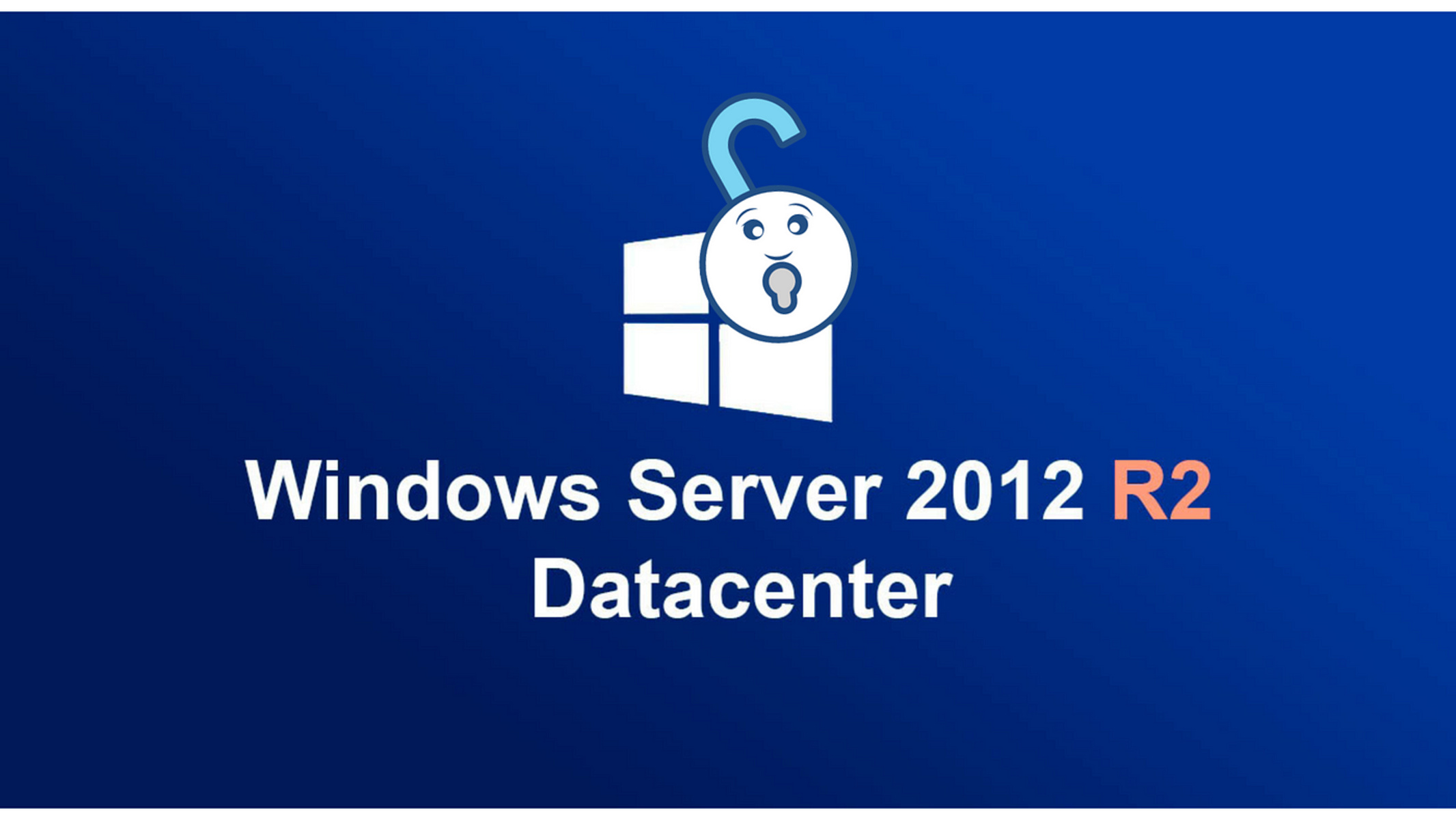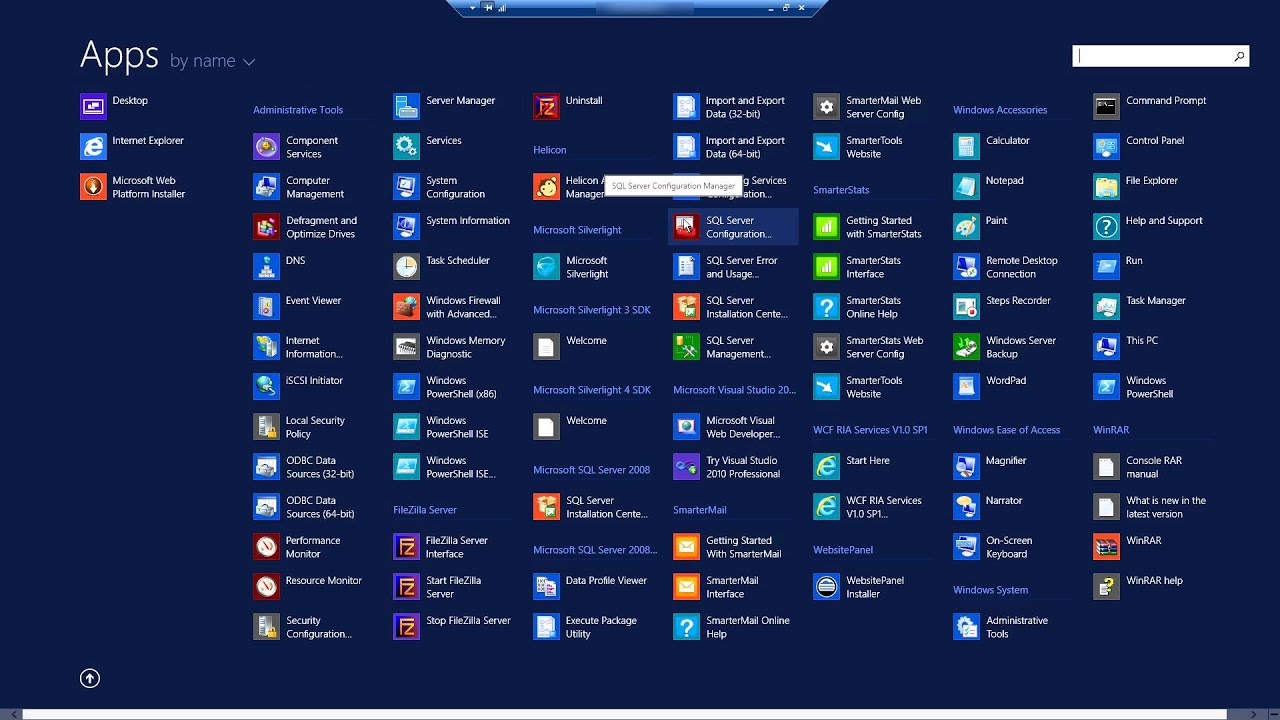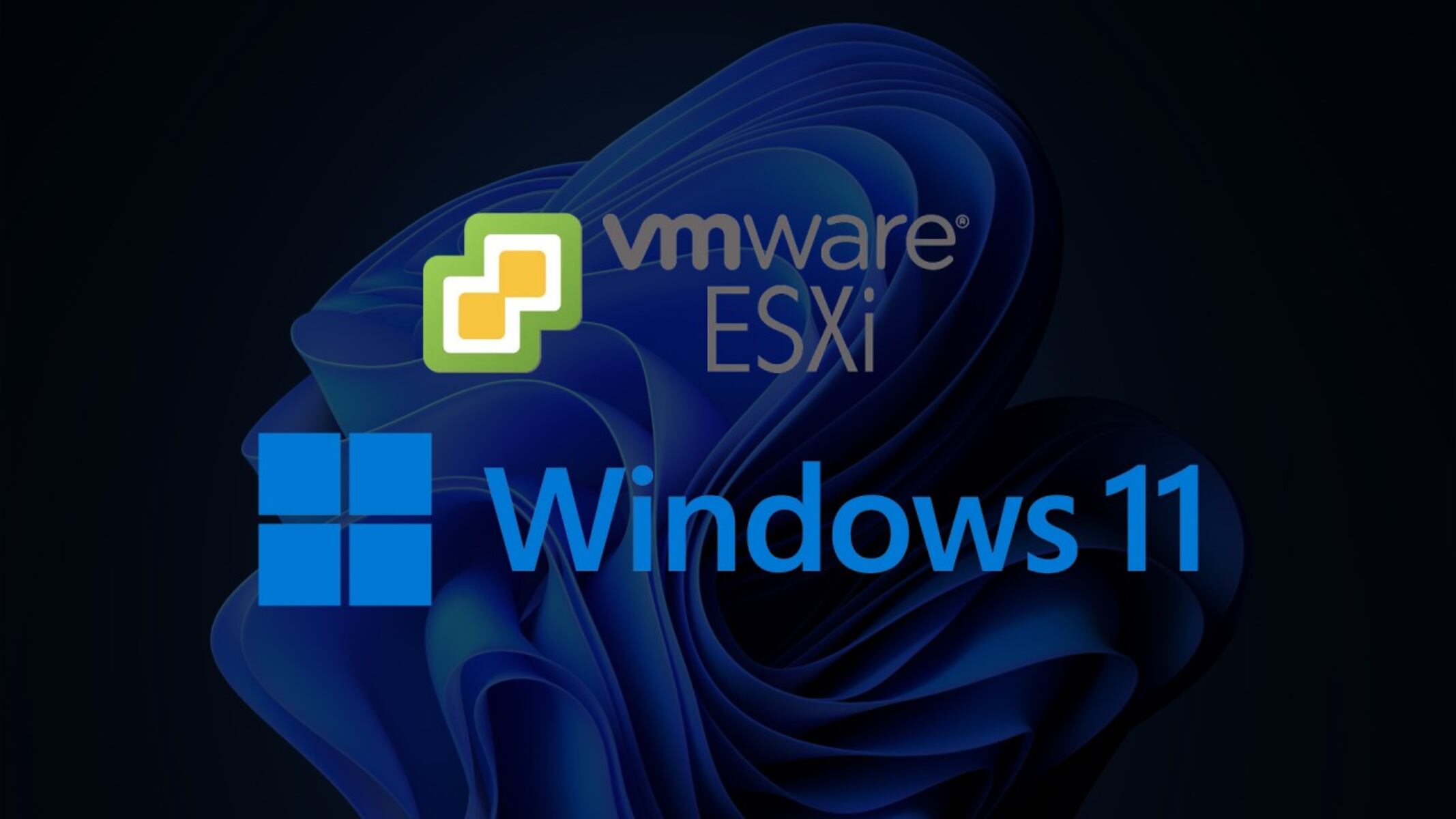Introduction
Welcome to the world of automated software deployment on Windows Server 2012! In today’s fast-paced business environment, automating tasks can significantly enhance efficiency and productivity. One of the key tasks that IT administrators frequently encounter is deploying software across multiple workstations. Manually installing software on each machine can be time-consuming and prone to errors.
Fortunately, Windows Server 2012 provides a robust solution for automating software deployment to all workstations. By leveraging Group Policy Objects (GPOs) and file sharing capabilities, you can push software installations to multiple machines seamlessly.
In this article, we will guide you through the process of setting up automatic software deployment on Windows Server 2012. We’ll cover the step-by-step instructions to prepare the software package, create a file share on the server, configure a Group Policy Object, and deploy the software to your workstations. By following these steps, you’ll be able to streamline the software deployment process and ensure consistent installations across your network.
Before we dive into the details, it’s essential to note that this guide assumes you have a basic understanding of Windows Server 2012 and its components. Additionally, we recommend that you have administrative access to the server and the necessary permissions to create and manage GPOs.
Now, let’s explore the exciting world of automated software deployment on Windows Server 2012 and discover how it can revolutionize the way you manage software installations on your network.
Step 1: Prepare the Software Package
The first step in setting up automatic software deployment on Windows Server 2012 is preparing the software package that you want to deploy. Before you begin, ensure that you have the necessary installation files, license keys, and any additional dependencies required for the software.
Here are the steps to follow:
- Obtain the software: If you haven’t already, download the software installation files from the vendor’s website or obtain them from another reliable source. Make sure you have the correct version of the software that is compatible with Windows Server 2012.
- Organize and customize the software: Before deploying the software, it’s a good idea to organize the files in a logical manner. Create a directory structure that will make it easy for users to locate the software on their workstations. Additionally, consider customizing the installation settings or creating an unattended installation file to streamline the deployment process.
- Test the installation: Before proceeding, it’s important to test the software installation on a test machine to ensure that it works as expected. This helps identify any potential issues or conflicts that may arise during deployment.
- Create an easily accessible location: To simplify the deployment process, copy the software installation files to a centralized location on the Windows Server 2012, such as a network share or a dedicated folder. This ensures that all workstations can access the files when deploying the software.
By following these steps, you will be well-prepared to deploy the software package to all workstations on your network. Keep in mind that the specific steps may vary depending on the software you’re deploying, so refer to the vendor’s documentation or support resources for any software-specific instructions.
Now that we’ve prepared the software package, we’re ready to move on to the next step: setting up a file share on the server.
Step 2: Set Up a File Share on the Server
Now that you have prepared the software package, the next step is to set up a file share on the Windows Server 2012. This file share will serve as the central location from which the workstations can access the software installation files.
Follow these steps to set up a file share:
- Create a new folder: On the Windows Server 2012, navigate to the location where you want to create the file share. Right-click and select “New Folder” to create a new folder. Give the folder a descriptive name that reflects the software being deployed.
- Share the folder: Right-click on the newly created folder and select “Properties.” In the Properties window, go to the “Sharing” tab and click on “Advanced Sharing.” Check the box that says “Share this folder” and provide a share name for the folder.
- Set permissions: Once the folder is shared, click on the “Permissions” button in the “Advanced Sharing” window. Ensure that the appropriate users or groups have the necessary permissions to access the folder. It is recommended to grant read-only access to ensure the integrity of the software package.
- Note the network path: After setting up the file share, note down the network path of the shared folder. This path will be used later when configuring the Group Policy Object for software deployment.
By setting up a file share, you create a central repository from which the workstations can retrieve the software installation files during deployment. This ensures that all workstations have access to the latest version of the software and simplifies the distribution process.
Now that we have established the file share, let’s move on to the next step: creating a Group Policy Object (GPO).
Step 3: Create a Group Policy Object
With the software package prepared and the file share set up, the next step is to create a Group Policy Object (GPO) on the Windows Server 2012. A GPO is a collection of settings that can be applied to multiple workstations, allowing you to manage various aspects of their configurations and behavior.
Follow these steps to create a GPO:
- Open the Group Policy Management Console: On the Windows Server 2012, open the Group Policy Management Console (GPMC). You can find it under the Administrative Tools or by searching for “Group Policy Management” in the start menu.
- Create a new GPO: In the GPMC, right-click on “Group Policy Objects” and select “New.” Give the GPO a descriptive name that reflects the software being deployed.
- Edit the GPO: Right-click on the newly created GPO and select “Edit.” This will open the Group Policy Editor, allowing you to configure the settings for the GPO.
- Navigate to the Software Installation settings: In the Group Policy Editor, navigate to “Computer Configuration” > “Policies” > “Software Settings.” This is where you will configure the software deployment settings for the GPO.
- Add the software package: Right-click on “Software Installation” and select “New” > “Package.” Browse to the network path of the file share you created in the previous step and select the software installation file (.msi or .exe).
- Configure deployment options: In the software deployment properties window, you can specify the deployment method, whether to assign or publish the software, and other installation options. Choose the appropriate options based on your requirements.
- Link the GPO: Finally, link the GPO to the appropriate Organizational Unit (OU) containing the target workstations. Right-click on the OU and select “Link an Existing GPO…” Choose the GPO you just created and click “OK.”
By creating a Group Policy Object, you establish the framework for deploying the software package to the target workstations. The GPO contains the necessary configuration settings and instructions for the software deployment.
Now that we have created the GPO, let’s move on to the next step: deploying the software via Group Policy.
Step 4: Deploy Software via Group Policy
Now that we have prepared the software package, set up the file share, and created a Group Policy Object (GPO), it’s time to deploy the software to the target workstations using Group Policy.
Follow these steps to deploy the software via Group Policy:
- Apply the GPO: Ensure that the GPO you created in the previous step is applied to the correct Organizational Unit (OU) containing the target workstations. You can verify this in the Group Policy Management Console (GPMC).
- Force Group Policy update: On each target workstation, open a command prompt and run the command “gpupdate /force” to force the Group Policy update. This ensures that the workstation receives the latest policies, including the software deployment instructions.
- Reboot the workstations: To complete the software deployment, prompt the target workstations to restart. This ensures that the software installation occurs during the reboot process.
- Monitor the deployment: Keep an eye on the progress of the software deployment. You can monitor the deployment status in the Group Policy Management Console (GPMC) or by checking the event logs on the target workstations.
- Verify successful installation: Once the workstations have rebooted, verify that the software is successfully installed. You can do this by checking the installed programs list or launching the software on the target workstations.
By deploying the software via Group Policy, you ensure that the software installation is automated and consistent across all target workstations. The Group Policy framework takes care of deploying the software package and managing the installation process for you.
Now that we have successfully deployed the software, let’s move on to the final step: testing the software deployment.
Step 5: Test the Software Deployment
After deploying the software via Group Policy, it is crucial to test the software deployment to ensure its effectiveness and address any potential issues that may arise. Testing allows you to verify that the software is correctly installed on the target workstations and that it functions as intended.
Follow these steps to test the software deployment:
- Select test workstations: Choose a few representative test workstations from the target group. These workstations should have the GPO applied and should reflect the typical hardware and software configurations found in the network.
- Reboot the test workstations: Restart the selected test workstations to trigger the software installation process. During the reboot, the software deployment instructions specified in the GPO will be executed.
- Monitor the installation: Keep an eye on the progress of the software installation on the test workstations. Monitor the installation logs or event logs to identify any errors or issues that may have occurred during the deployment process.
- Verify successful installation: Once the test workstations have finished rebooting, check the installed programs list or launch the software to ensure that it has been successfully installed without any errors. Test its functionality to confirm that it is working as expected.
- Address any issues: If you encounter any issues during the testing phase, troubleshoot them by reviewing the deployment logs, checking the GPO settings, or consulting the software vendor’s documentation and support resources. Make any necessary adjustments or corrections to ensure a successful deployment.
Testing the software deployment allows you to identify and resolve any issues before rolling out the software to all the target workstations. It ensures that the deployment process is reliable and minimizes potential disruptions caused by faulty installations or compatibility problems.
Now that you have tested the software deployment and confirmed its success, you are ready to unleash the power of automated software deployment on your Windows Server 2012 network.
Conclusion
Automated software deployment on Windows Server 2012 is a powerful capability that can greatly simplify the management and distribution of software across an entire network. By following the steps outlined in this guide, you can leverage Group Policy Objects (GPOs) and file sharing to deploy software packages seamlessly to multiple workstations.
We started by preparing the software package, ensuring that it was organized, customized, and thoroughly tested. Next, we set up a file share on the server, creating a central repository from which workstations could access the installation files.
Then, we created a Group Policy Object (GPO) that contained the necessary configuration settings for deploying the software. By linking the GPO to the appropriate Organizational Unit (OU), we established the framework for the software deployment.
With the GPO in place, we deployed the software to the target workstations, forcing a Group Policy update, and rebooting the machines to complete the installation. Monitoring the deployment and verifying the successful installation were essential steps to ensure the software was correctly deployed.
Finally, we tested the software deployment on a few representative workstations, addressing any issues that arose during the process. It is crucial to test the deployment to detect any potential errors or conflicts, ensuring a smooth rollout to all workstations.
Automated software deployment not only saves time and effort but also improves consistency and reduces the risk of human error. With centralized management and automated installation, you can efficiently deploy software updates, security patches, or new applications across your network.
By following this guide, you have learned how to set up automatic software deployment on Windows Server 2012. Now, you are equipped with the knowledge and tools to streamline your software management processes, freeing up valuable time for other important tasks.
Embrace the power of automation, and take control of your software deployment with Windows Server 2012. Start leveraging the benefits of efficient and consistent software distribution today.

























